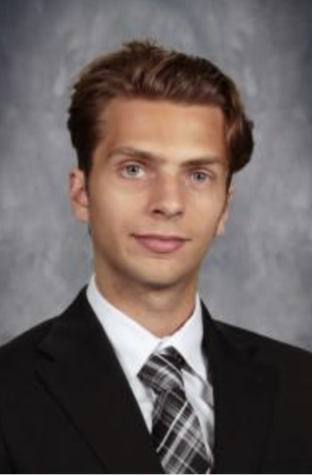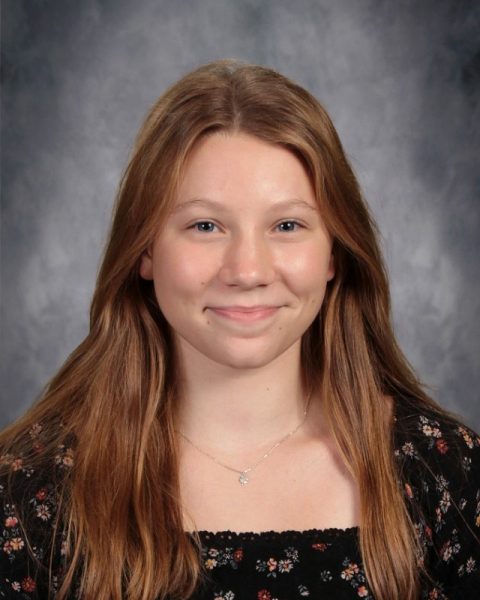Principal notes plans for next year’s schedule
Specific start and dismissal times are under consideration
Students walk from Kelly to Loretto on April 14 during a passing period. The lengths of next year’s passing periods are pretty much set, but other details of the daily schedule have yet to be determined, according to Principal Mrs. Julie Barthel.
This has been a turbulent school year. That much is plainly obvious to everyone who has tried to learn, teach or work through a pandemic. The daily academic schedule, which the administration has changed four times during this school year in an attempt to provide the best experience for both teachers and students, drives that instruction.
Those changes weren’t trivial either — from Mission Mondays to 10-minute passing periods, the schedule shifted the way that students and staff moved through their day, every day.
Principal Mrs. Julie Barthel and the Academic Leadership Team are using the knowledge from these changes to design a schedule for next year, with no specific schedule determined at this point. Barthel said, “Our hope is to have a great schedule and stay with it.”
The Academic Leadership team consists of Barthel, Vice Principal for Academics Mr. Mark Matthews, Vice Principal for Student Conduct and Attendance Ms. Kathy Saum, STEM director Dr. Aarti Brooks, Director of Holy Cross Integration Ms. Ashley Hill and Attendance Specialist Mrs. Angela McGruder.
Passing periods
Barthel said that the current five-minute passing periods will stay, rather than the 10-minute passing periods utilized at the beginning of school. The cleaning bells currently in use could be absent from next year’s schedule. Barthel said, “I don’t anticipate having a cleaning bell next year.”
Cycles
Since the 2016-2017 school year, the school has employed a cyclical schedule, which saw its first major revamps since its inception this year. The administration switched from a seven-day rotating schedule to a five-day rotating schedule. Clarifying for next year, Barthel said, “We will still be on a rotating cycle. With that, we’re looking at the minutes, how many with a five-day cycle or a seven-day cycle, we’re comparing those minutes. Dr. (Aarti) Brooks, our STEM director, did a lot of research on that for us.
“We’re looking at how many times you’ll see a teacher in those periods, if it was a five- or seven- day cycle and what would be best for that. And we think that’s good, too, for kids, having fewer classes to focus on per night rather than every class, every night.”
Start/end times
The 9 a.m. start time that went into effect in November, or a time later than the traditional 7:50 beginning of the school year, may become the on-campus standard next year. Barthel said, “We would like to stay around an 8:45 or a 9 start.”
With reference to the end time of school, Barthel said, “We have a certain amount of minutes that we have to have each day by the state for each day to count, and lunch doesn’t count in that. We also have to look at athletics, and our kids that are doing things after school, especially sports that need sunlight like baseball or golf.”
Barthel, in relation to both start and end times, added, “We’re also working with our transportation director to make sure we can get the bus routes done in the morning and after school.”
Flex
Once a somewhat unique feature of the school’s schedule, flex period has been functionally absent for the entire school year outside of a small revival during online learning in which it occupied the current activity period. A flex renaissance could be the ultimate return to normal for the school schedule, not least because of the coronavirus problems it raises.
Barthel said, “Flex is probably the most non-Covid friendly thing you can have, (with) kids everywhere. But it’s also (a good) thing, we know that. We want to bring flex back.That’s a great time for kids to be with friends to take care of whatever they have to take care of, and then that’s going to make (students) happier and healthier. But we’re still not completely out of the woods with Covid, so for now it looks like flex might stay before school with flex/office hours, and you come in and take care of what you need.”
Based on past years’ experience, Barthel said, “Supervision is always an issue as well with flex, all the teachers in their classrooms, having 1,100 students out and about. We’re looking at that as well — are we providing the safest schedule?”
Clubs which met during flex in past years have had to find different ways to meet. Barthel said, “Similar to this year, they could meet during that flex time in the morning or during the office hours time, they could meet after school, they could meet virtually.”
Activity period
The new activity period provides an open period extending each Day 3’s E period. It can be seen as an answer to both Covid and safety challenges to flex. Barthel said, “We’ve gotten a lot of feedback from teachers that they like that. They like going to Mass and those types of activities with their classes, because (students) already have a relationship with that teacher. We like the activity period, and there will probably be an activity period in next year’s schedule as well.”
Counties
Counties are perhaps the most forgotten schedule item. Freshmen were each assigned to a county, in which they would remain in for the rest of their tenure on the Hill. Different grade levels interacted and completed various service activities together. On its continuation, Barthel said, “We are looking at counties. We would like to have some sort of advisory period, and we’re looking at what that might look like. Because Counties — we have a lot of research, we talked to teachers and students — and some kids were having a great experience and some kids were not having such a great experience. We definitely want to have an advisory period, but we haven’t decided exactly what yet, it might look a little different.”
Lunch
The new building, with a new cafeteria, has the potential to change the where, when and how students each lunch. Barthel said, “At this point, I think we’ll still have three lunches, so it’ll be kind of similar. We’ll also have not only the new cafeteria but the SLC will be available to spread out more, and then there will be outdoor seating outside the new cafeteria.”
Mission Mondays
The first change to the schedule was a step back from the full in-person ambitions at the start of the year. Online Mission Mondays were able to solve multiple problems at once. Barthel said, “There were three reasons: we wanted our school to get clear for 72 hours because the virus could last, we wanted to meet our mission, clubs and activities could not meet in person, but they could meet virtually, and then sustainability for our teachers, it was just a lot for our teachers to teach online (and) face to face in our classrooms.”
Barthel continued, with respect to next year’s schedule, “We’re looking at now, how can we be innovative? What could we do at our school? So, if we do have any virtual days next year, we will have those because we found something like building in-service opportunities for our kids or even having (students) practice really high level online learning because (students) will have to do it when (they) go to college.
“We haven’t decided yet if we’re going to stay with Mission Mondays for sure. Right now, we’ll probably be at a more traditional schedule, but we may have some virtual days if we find a good reason that will help us reach our mission.”

Liam Eifert is a Senior and the Megaphone co-editor-in-chief. He runs cross-country and track for Cathedral. In his free time, he likes to read, study...








